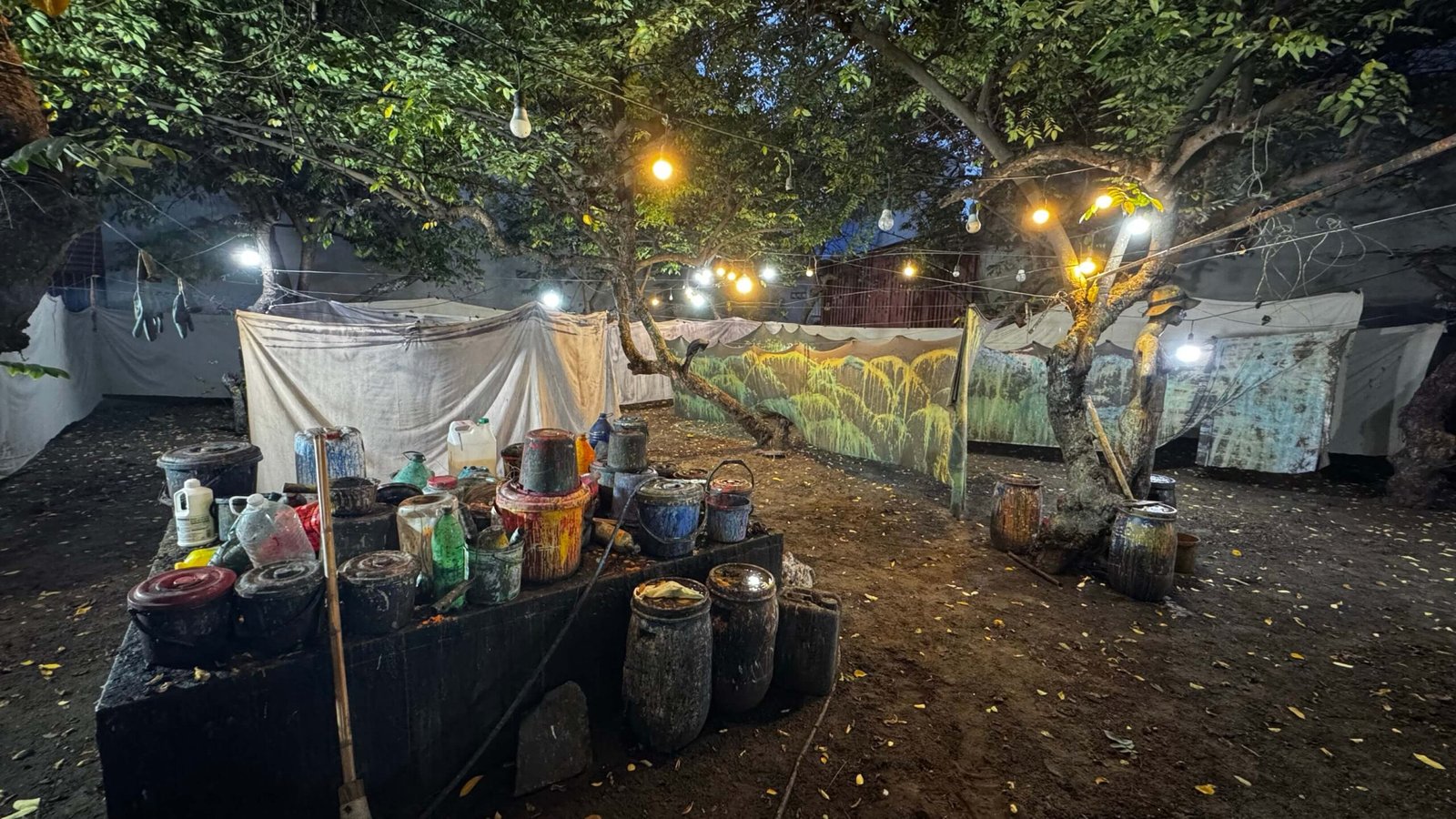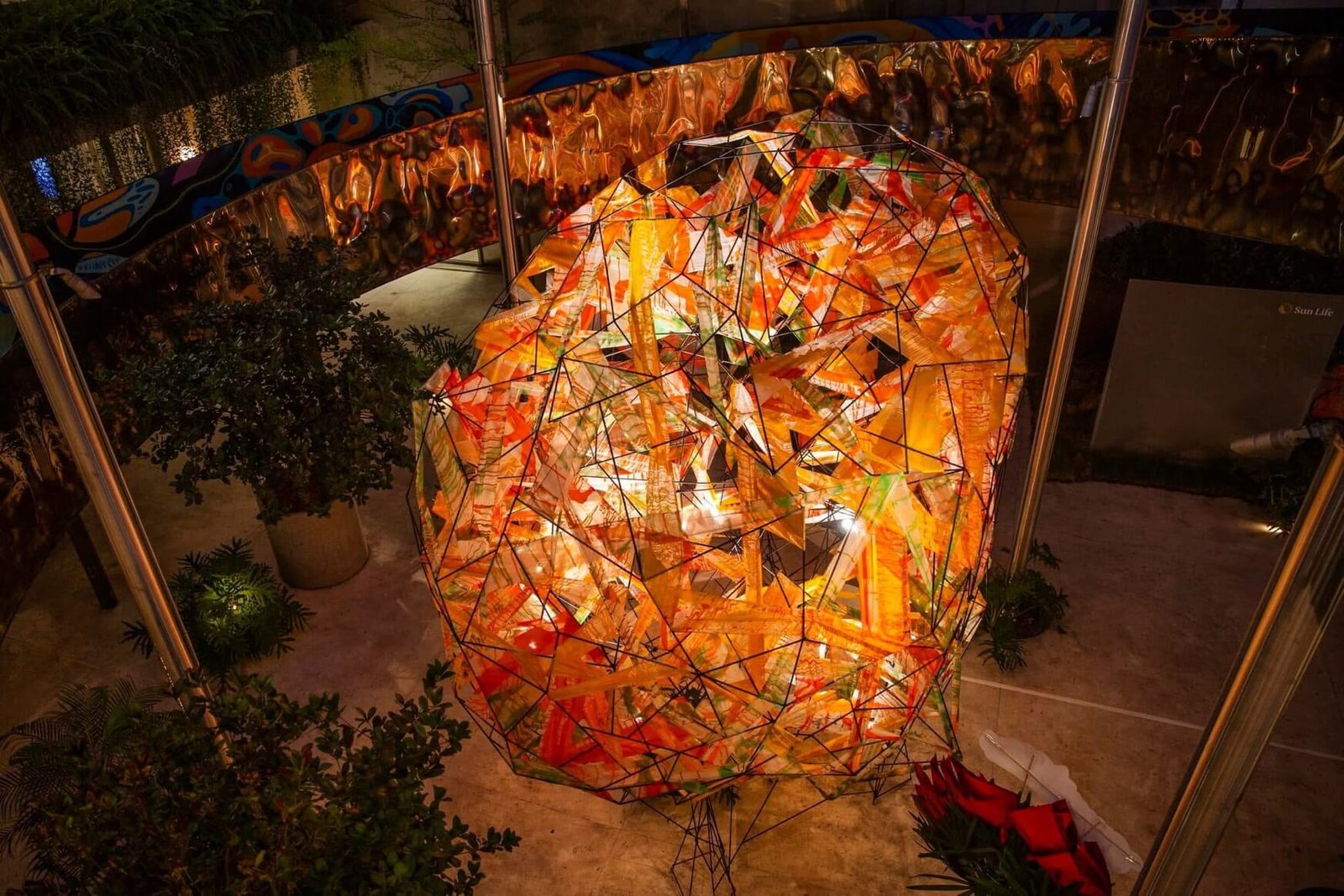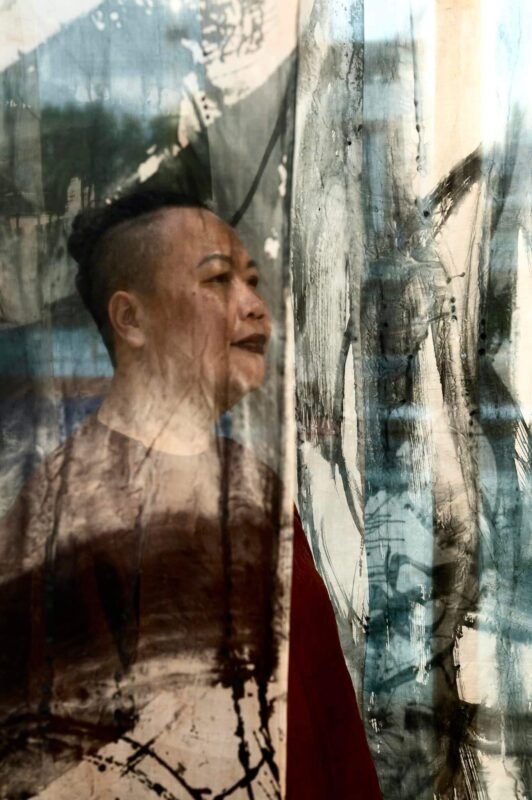Explore the inspiring journey of artist Thu Trần, whose unwavering dedication to her craft highlights the endurance, passion, and resilience required in the world of contemporary and local art.
_____________________________________________________________________________________________________________________________________
All jobs require stamina and endurance. But what do I mean by that? It is the resilience to show up every day, to remain committed to one’s craft despite challenges, doubts, and the weight of the world.
Being an artist is a peculiar profession—one where the most basic human needs are often sacrificed in pursuit of something greater, something intangible. It is a test of perseverance, a journey that demands both discipline and surrender. To be an artist is to walk through fire, allowing the flames to refine the soul, restore humility, and bring forth a deeper sense of peace.
Yet, the artistic journey is a double-edged sword. An artist may find themselves completely immersed in their work, devoting every ounce of their being to creation, or they may lose their way, distracted by material temptations. This was a hard lesson I learned from artist Thu Tran. I recall the words of another artist, Lương Duy, who once told me, “It is hard to create art when your heart is not pure and your inner world is in chaos.” How far can an artist go if they cannot silence the noise around them?
Thu Trần’s studio is hidden behind a small gate in a narrow alley in Long Biên. I didn’t know what to expect on my first visit, but the space instantly felt open and thoughtful—like it had been shaped slowly over time. Thu welcomed me in without hesitation. We connected easily, the kind of conversation that doesn’t need effort or small talk. She showed me around her place in a way that felt genuine—not like a tour, but like she was sharing something personal. There was no need to impress, and maybe that’s what made it stick with me.

Her face beamed with pride as she showed me each painting, recounting the history behind them. Many of these pieces capture the essence of local art, drawing inspiration from cultural traditions and personal narratives.
“It must be costly for you to create these artworks,” I noted.
“Well, I have learned to be content and resourceful with what I have. Whenever I earn some income, I put it in buying materials to create. As long as I can afford it, I am happy,” she said. “My purpose in creating art is to serve. Servanthood is not often talked about in this industry because art has become so capitalized and commercialized that it has lost its humanity. What saddens me more than not selling my art is when people don’t appreciate it. With all the selfies and videos, they don’t care about what’s in front of them. They only care if they look good in the photo.”
She sighed, then continued, “I see people walk into galleries and exhibitions, snapping pictures without stopping to take in the brushstrokes, the textures, the stories hidden in each piece. They rush through, treating the artwork like a backdrop instead of something alive. I sometimes wonder, if no one truly sees my art, does it even exist in their world?”
“Has anyone ever told you to stop?” I asked.
“Oh yes—my family. My brother, a musician working for the Party, once said, ‘You’ve painted enough. Why don’t you pay more attention to our mother and get a job that pays more?’”
I noticed her eyes glisten as she held back tears. “But you know,” she shook her head lightly, “I just turned away and didn’t take it to heart… God, I would die if I stopped painting,” she murmured.
As she led me to the warehouse at the back, I asked, “How many paintings did you create last year?”
“Nearly 200,” she replied, unveiling her silk canvases. “I have to give specific instructions to the silk makers to design them exactly how I need. That’s why my silk canvas is thicker than usual. There’s a whole world behind silk. Its quality depends on the life stage of the silkworms—different stages produce different silk textures. The best silk is made when the silkworms are young, which is what people use for clothing.”

She shared, “I realized that I do well in art installation because I have the ability to manage space, which is not very common in Vietnamese contemporary art. I hand-dyed all of this silk myself—this piece alone must be at least 50 meters long. My friend sometimes gets annoyed because it takes her such a long time to fold it.”
Thu Trần’s artistic journey has been anything but conventional. “Everyone calls me eccentric, you know? That’s why I always do solo exhibitions—my style doesn’t match anyone else’s. Some people even call me ‘old’ in the field because I started quite late. But hey, Yayoi Kusama is still painting in her 90s!” she said with a laugh.
As she poured tea into my cup, she reflected on her early days. “I have loved painting since I first learned how to hold a paintbrush. After finishing art school, I pursued a master’s degree in art because I thought that was what it took to become a true artist. How silly of me,” she chuckled. “It took me a long time to understand what it really means to be called an artist.”

Her hands traced the edges of a silk painting delicately, her voice tinged with both sadness and resolve. “I do not create for fame or money. I create because I must. My art is my soul on canvas, and if just one person can stop and feel something—truly feel—then I have done my job.”
She glanced at me with a small, knowing smile. “Do you ever think about what will last when everything else fades? I hope that long after I am gone, my paintings will still whisper stories to those who are willing to listen.”
Her words lingered in my mind. What obligations do we have—toward art or toward people?
As I left Thu Trần’s residence, I found myself reflecting on this question. The modern world has made art more accessible yet, paradoxically, less appreciated. We are surrounded by images, yet few take the time to truly see. I thought about the endurance required not only to create but to persist—to continue making art even when recognition is scarce and financial struggles loom.

Perhaps that is the essence of an artist: to keep going despite the noise, the doubts, and the demands of society. To create not for validation but because creation is a necessity of the soul. Thu Tran’s unwavering devotion to her craft reminded me that true art is not just about technique or recognition—it is about resilience, about carrying the weight of expression in a world that often looks but rarely sees.
For those who genuinely seek to support artists like Thu Trần, it is not just about purchasing art. Whether it is visiting an online art gallery, exploring paintings for sale, or understanding the process behind original art and local art, true appreciation goes beyond ownership—it lies in seeing the soul of the artist within their work.
As I stepped out into the bustling city, her words echoed in my mind. The artist’s purpose is not just to serve themselves or the market but to serve art itself—to keep it alive, honest, and human. And that, perhaps, is the highest form of endurance.

 Français
Français Tiếng Việt
Tiếng Việt
